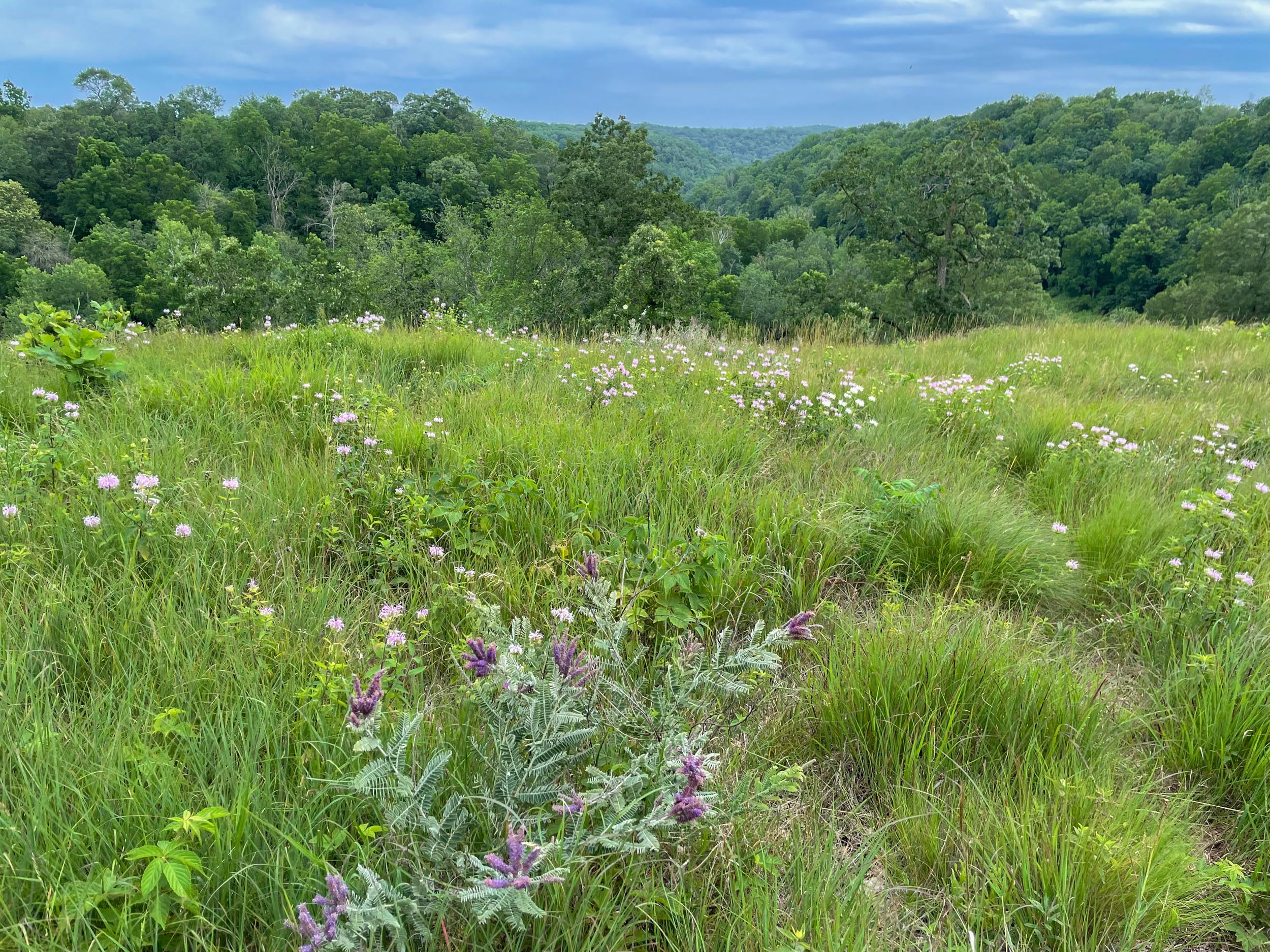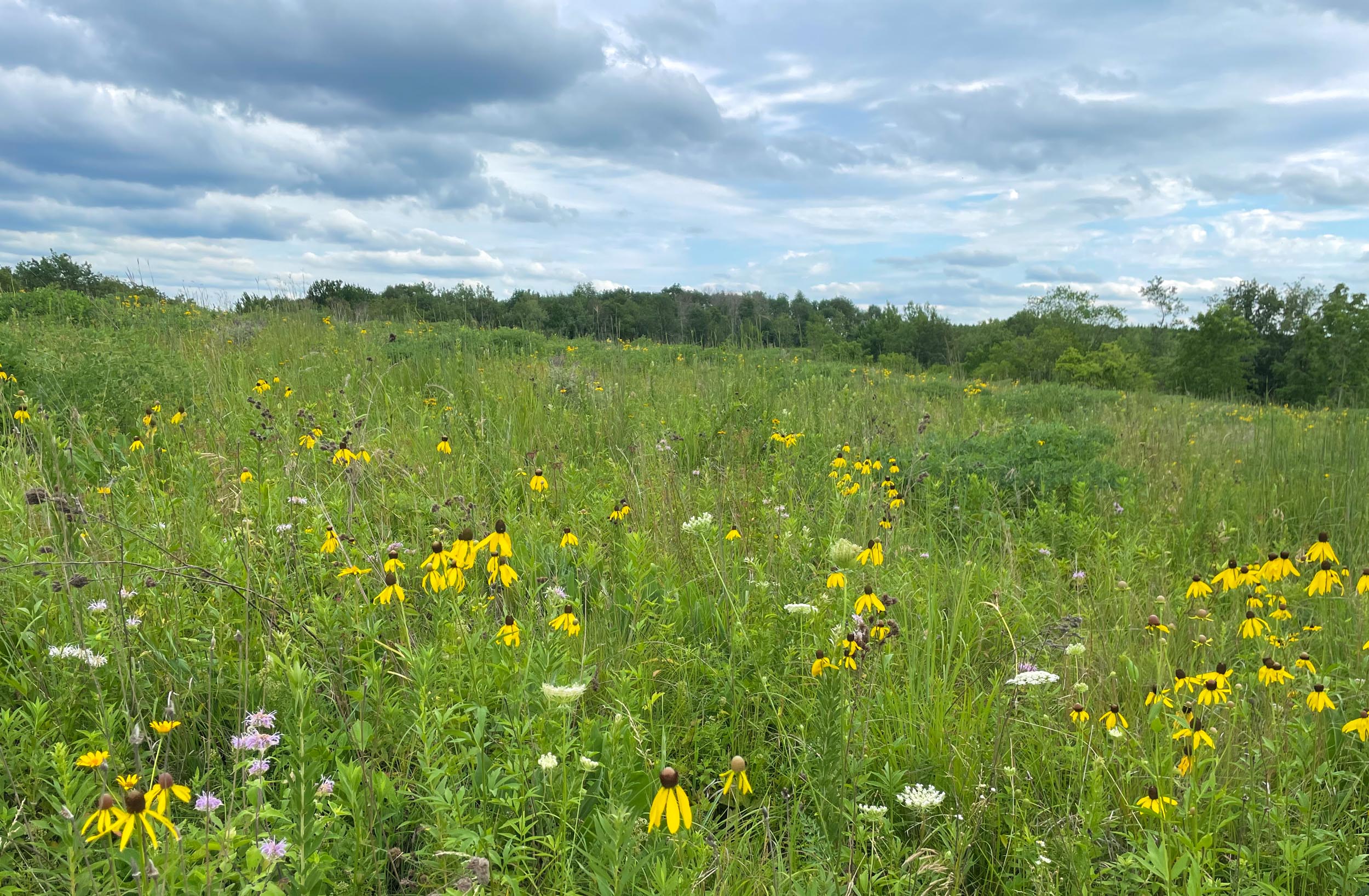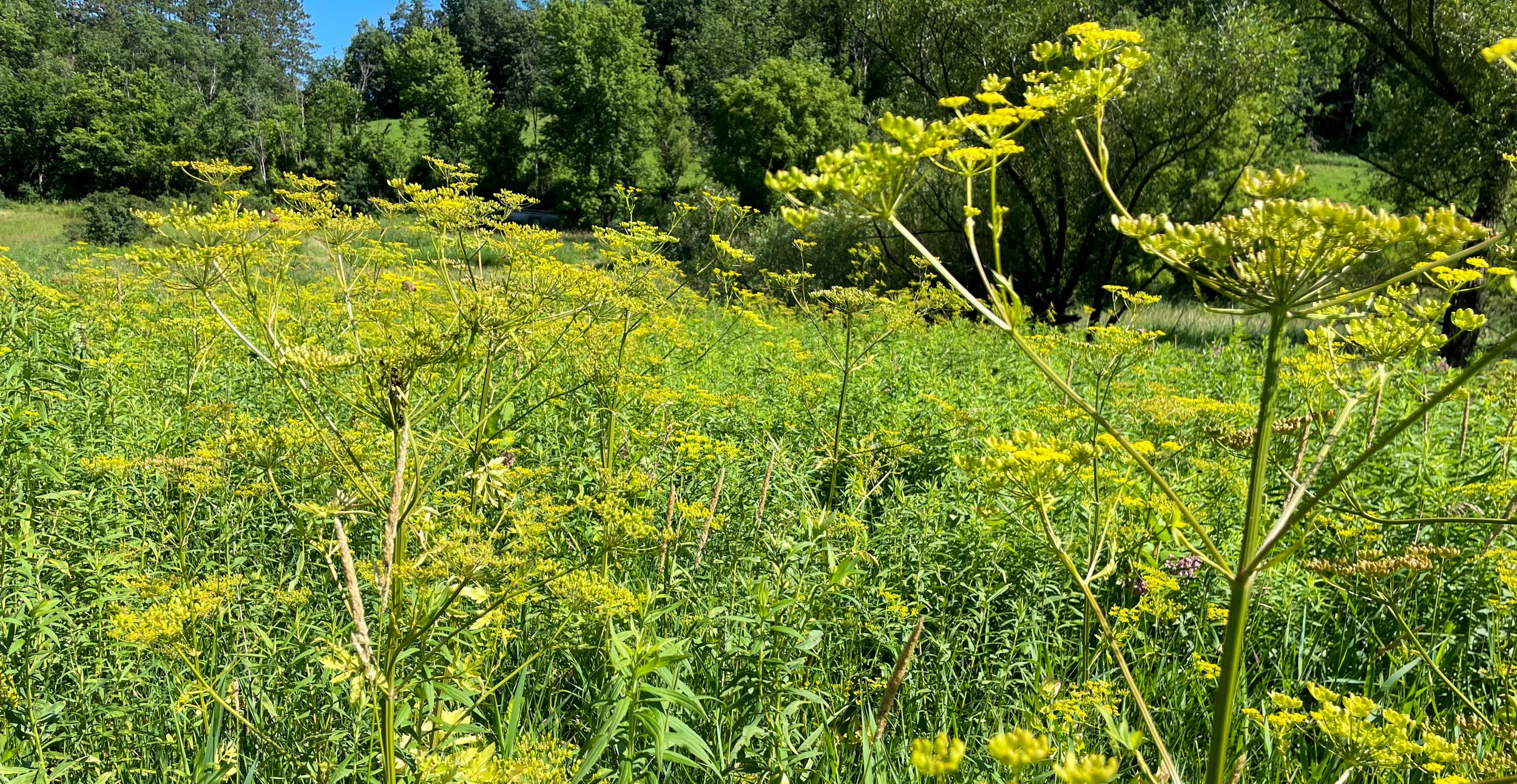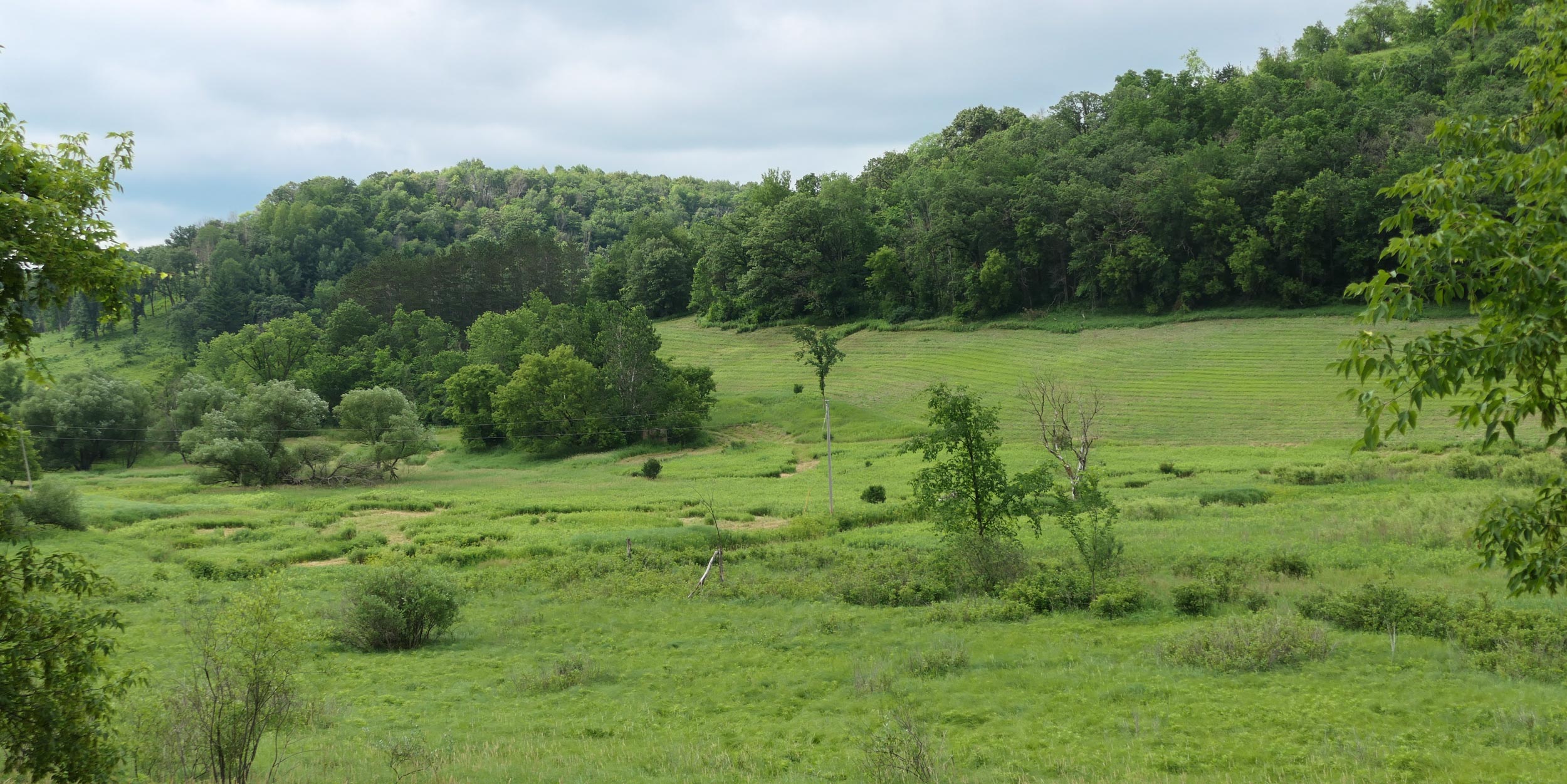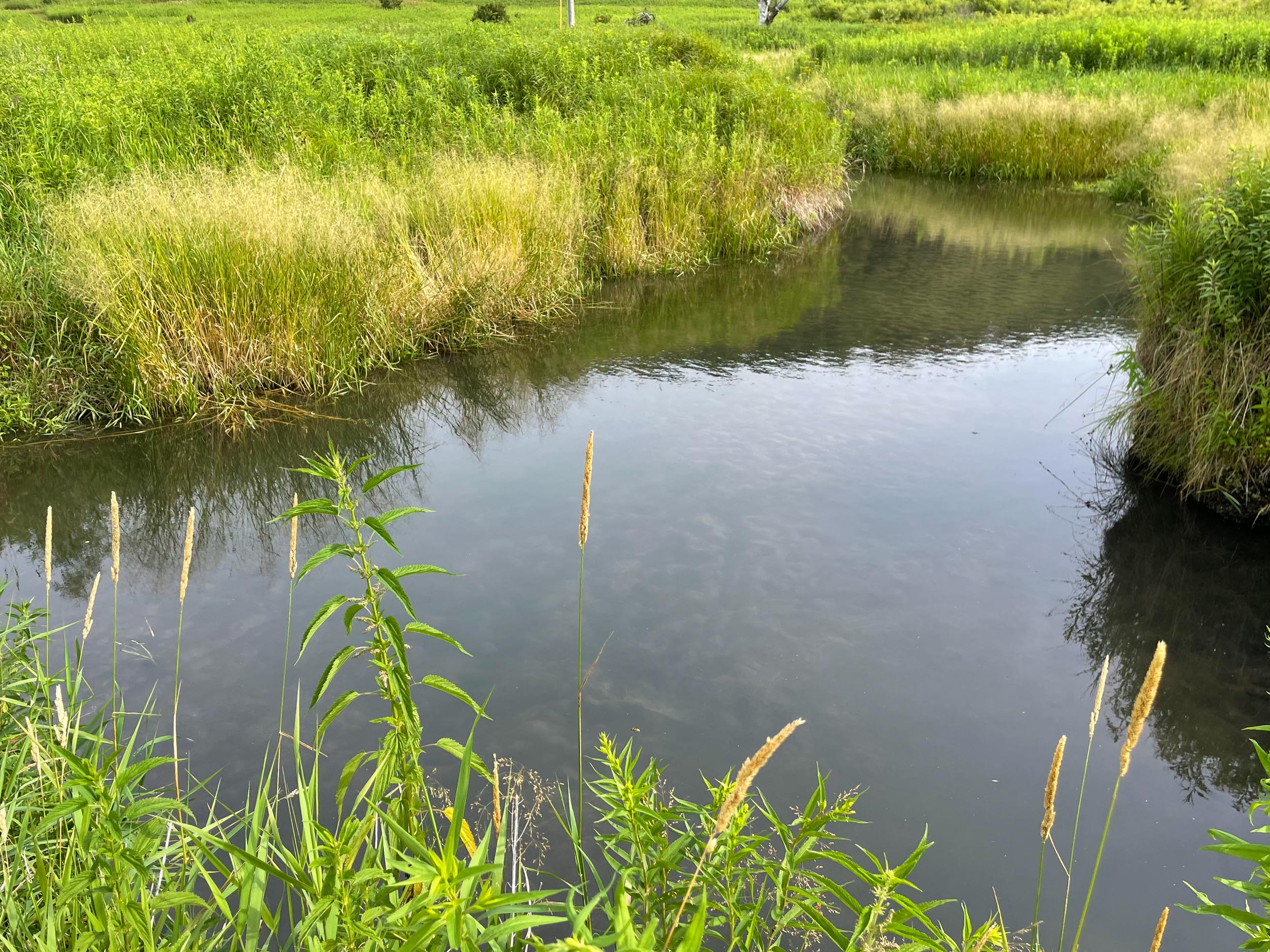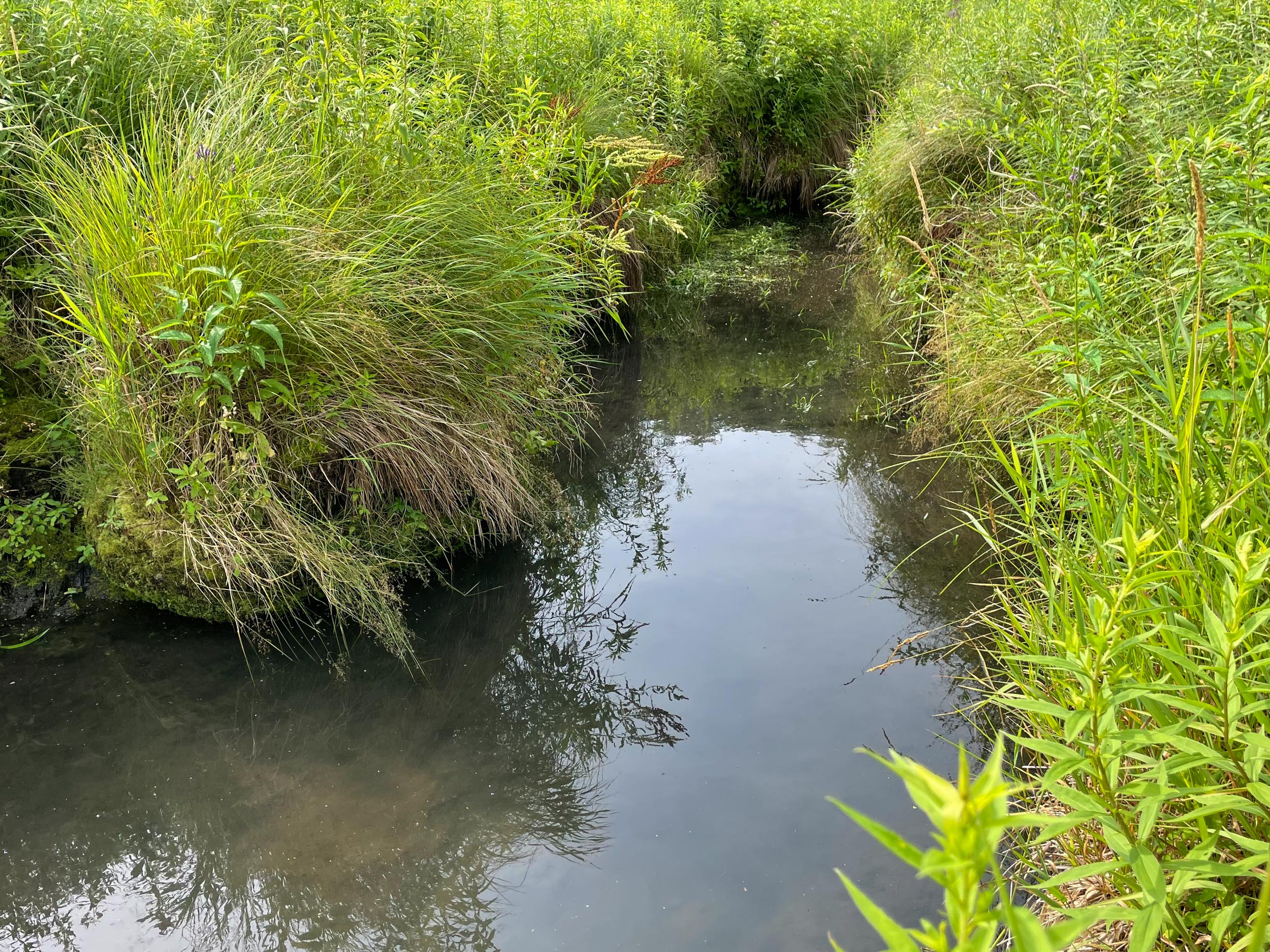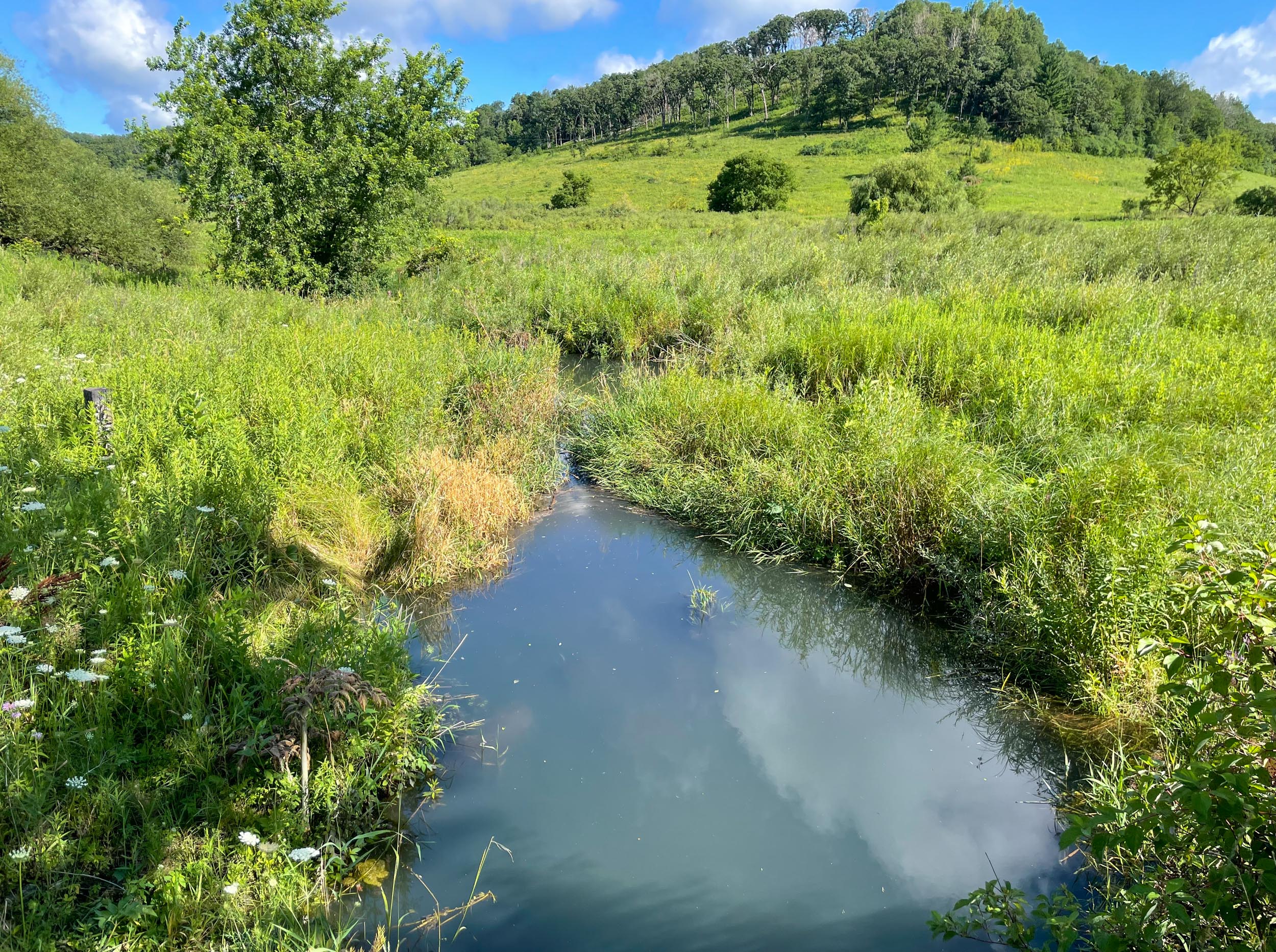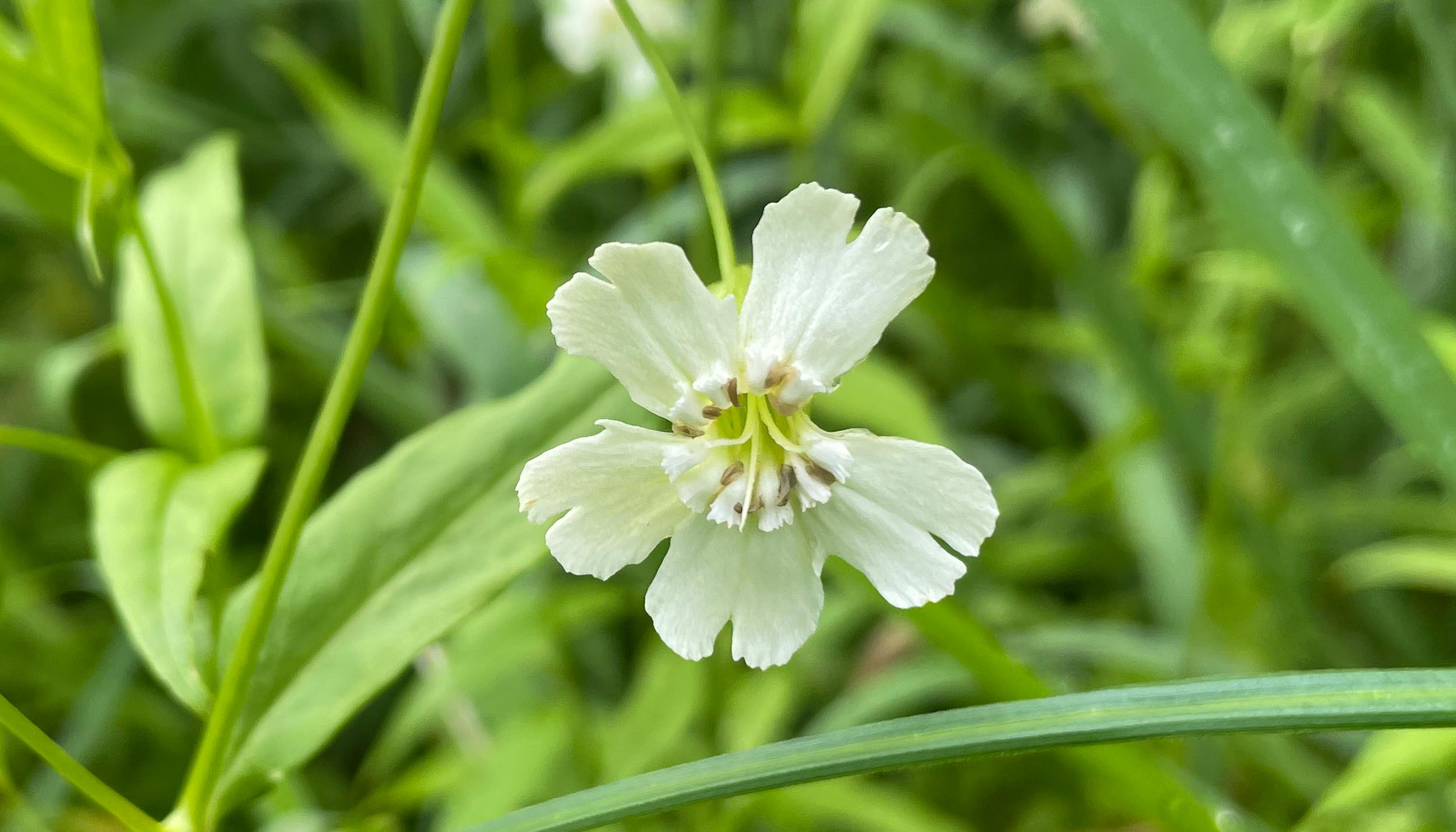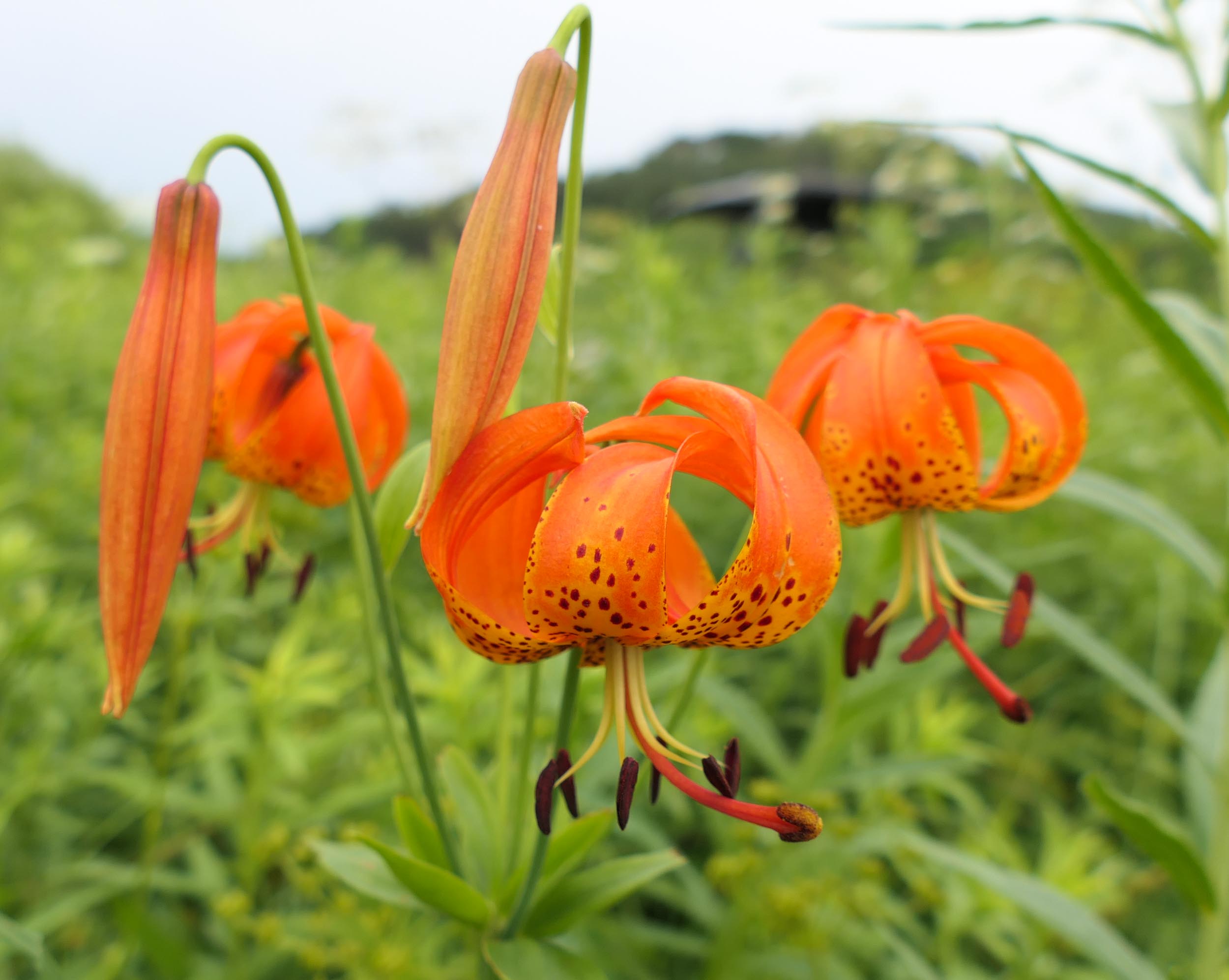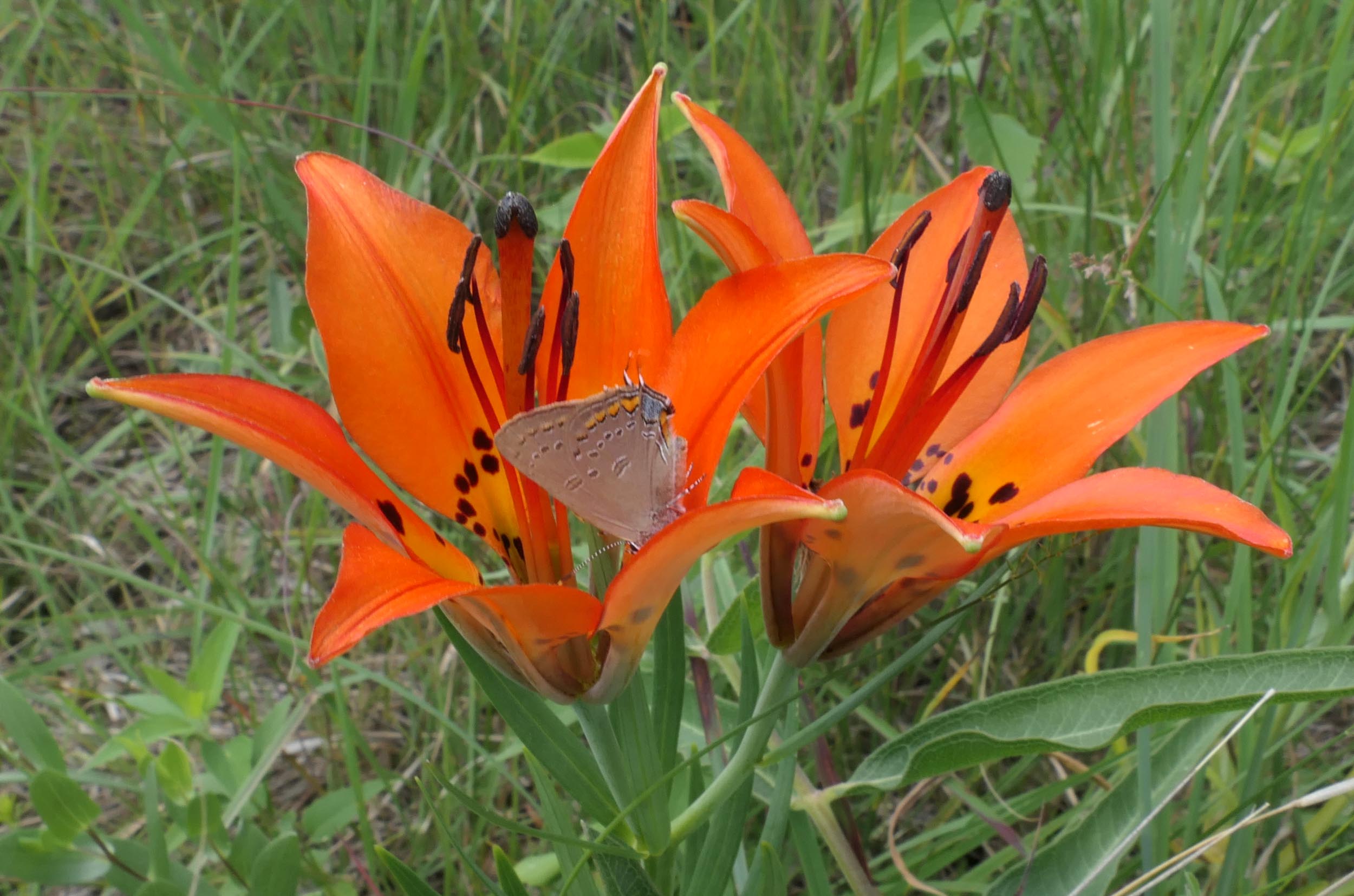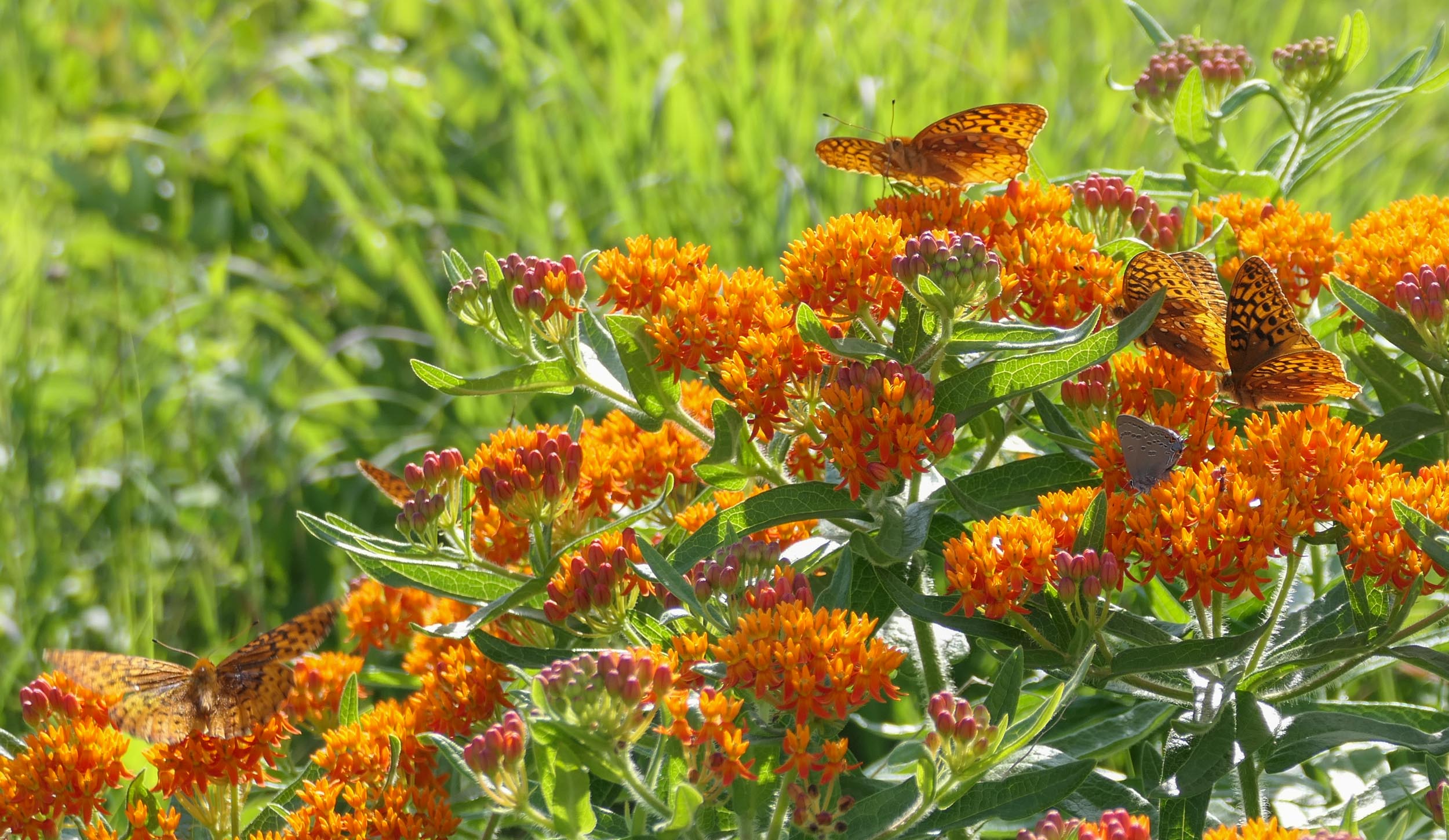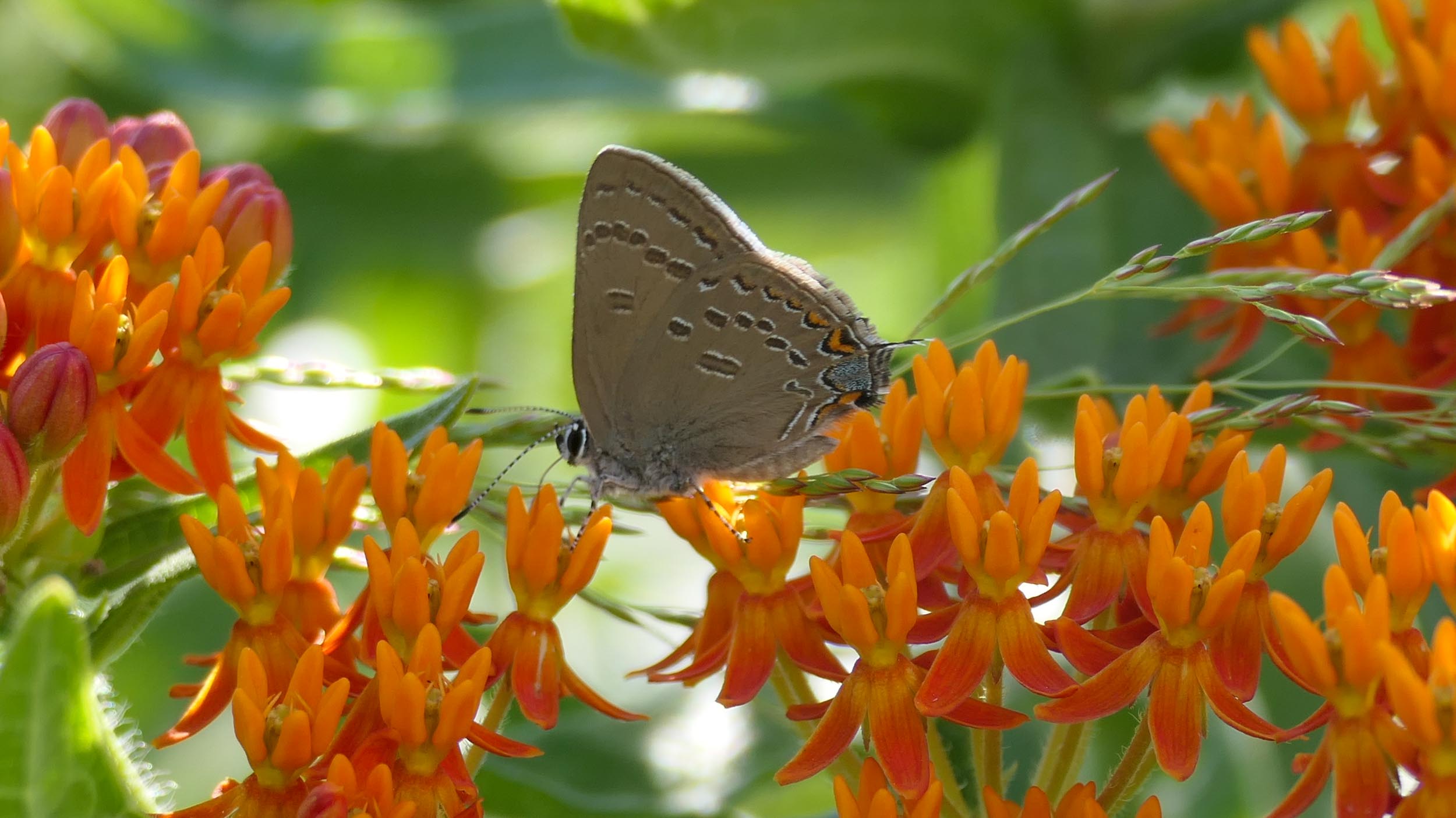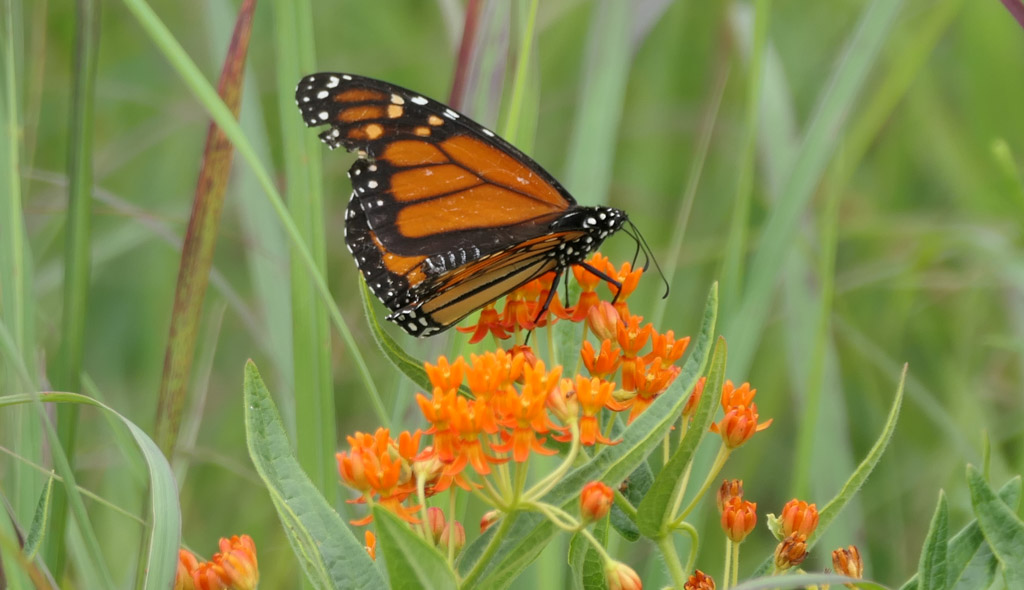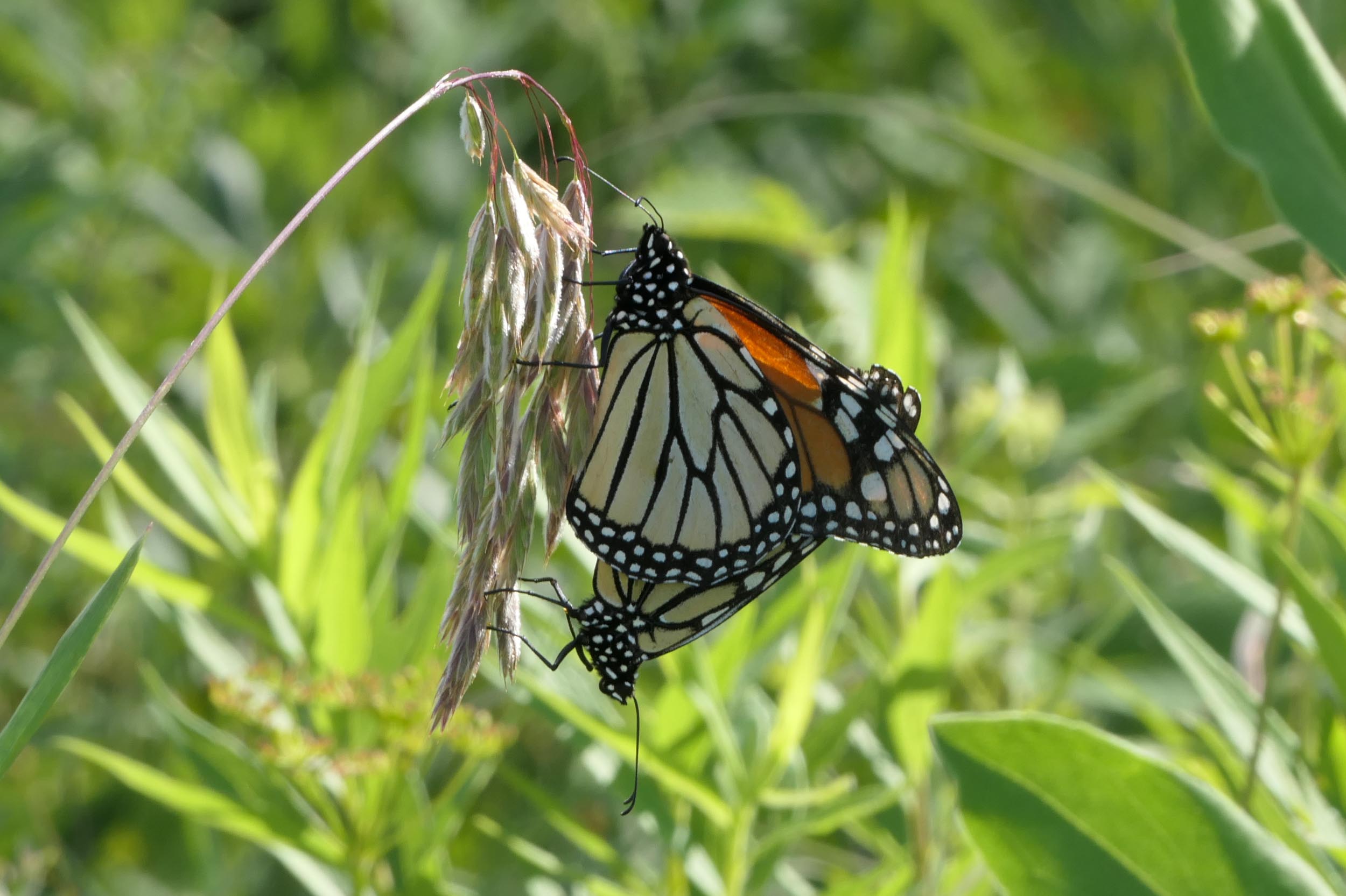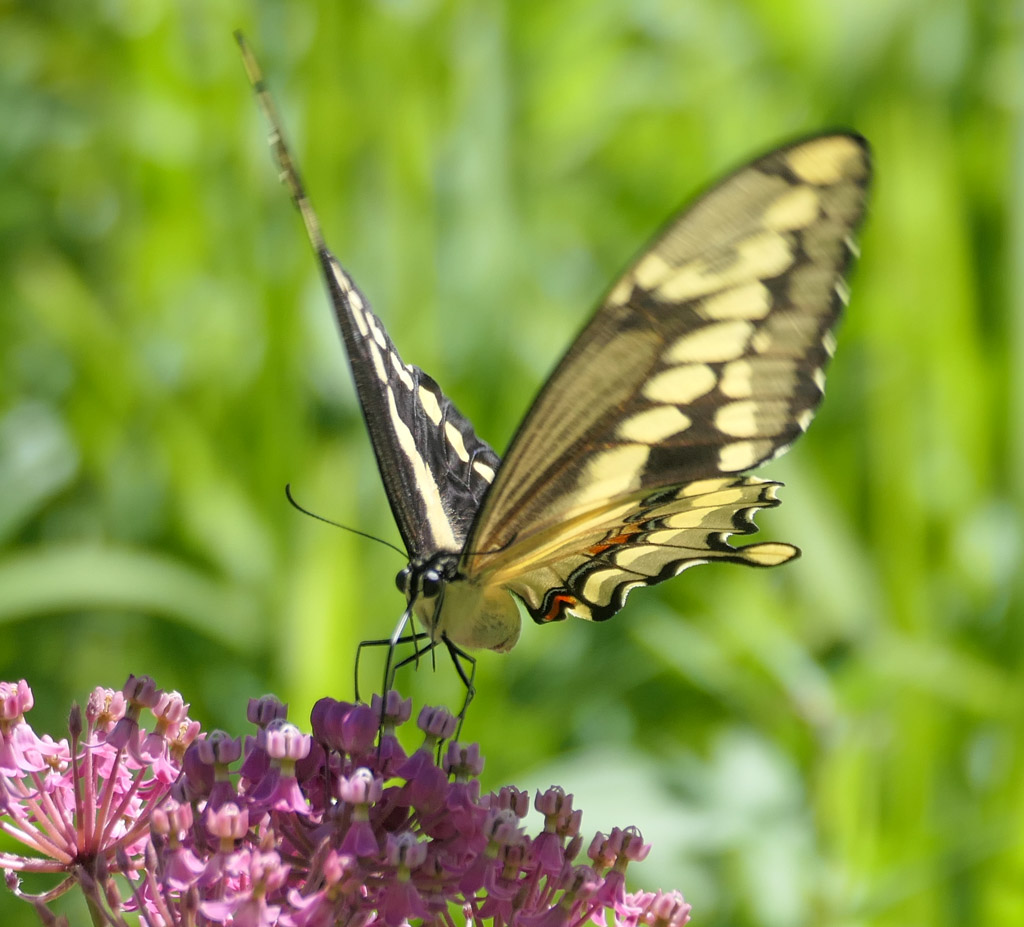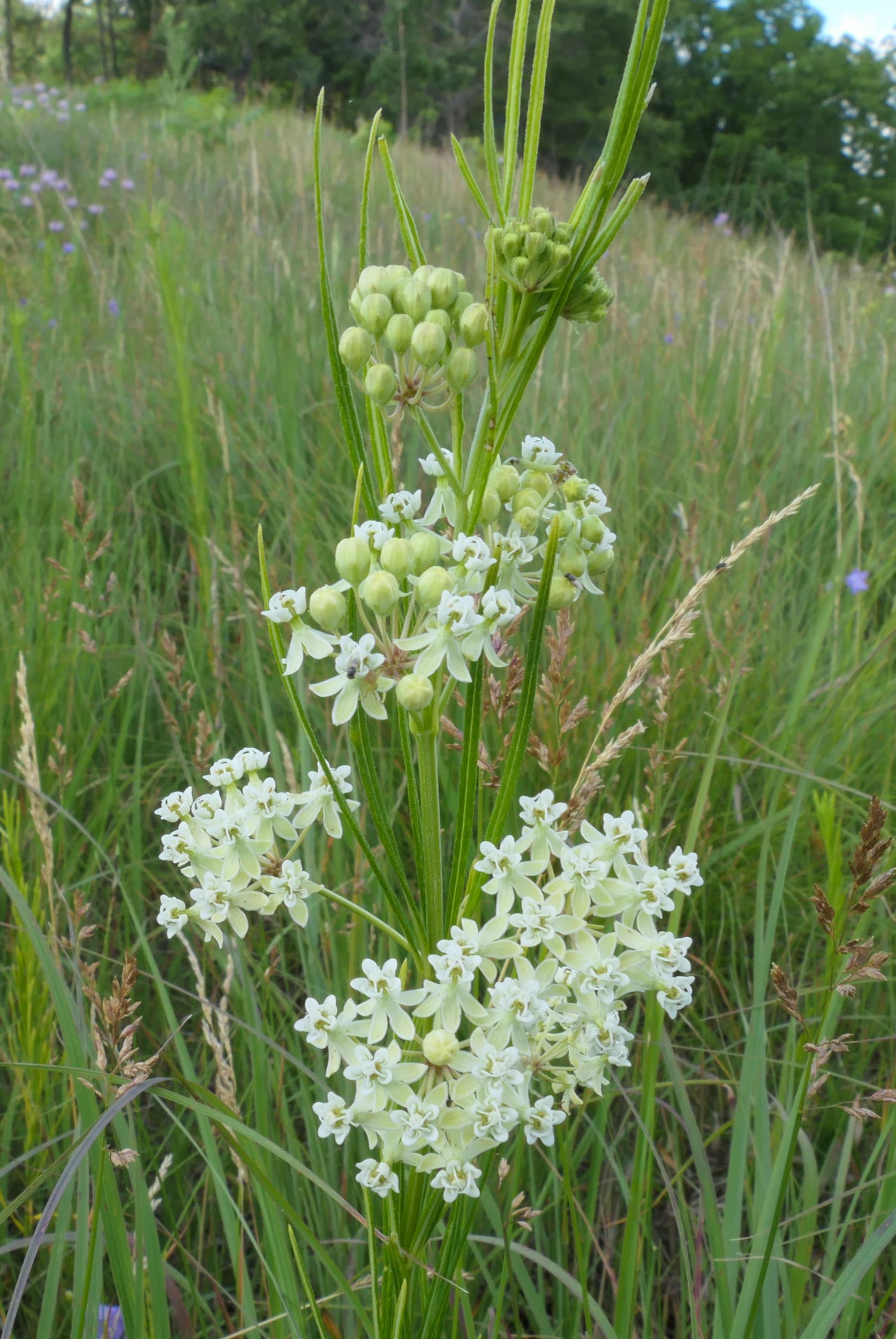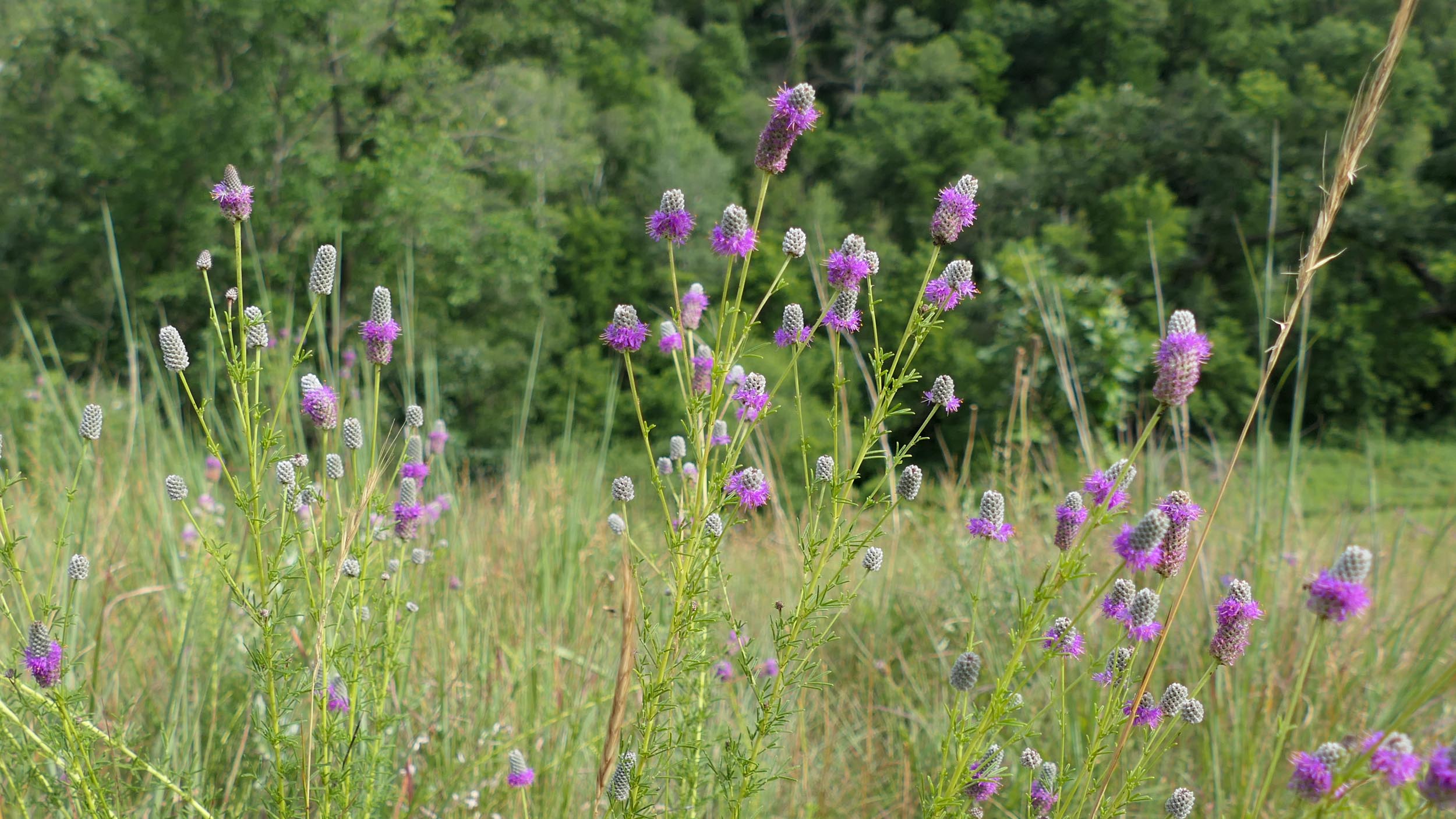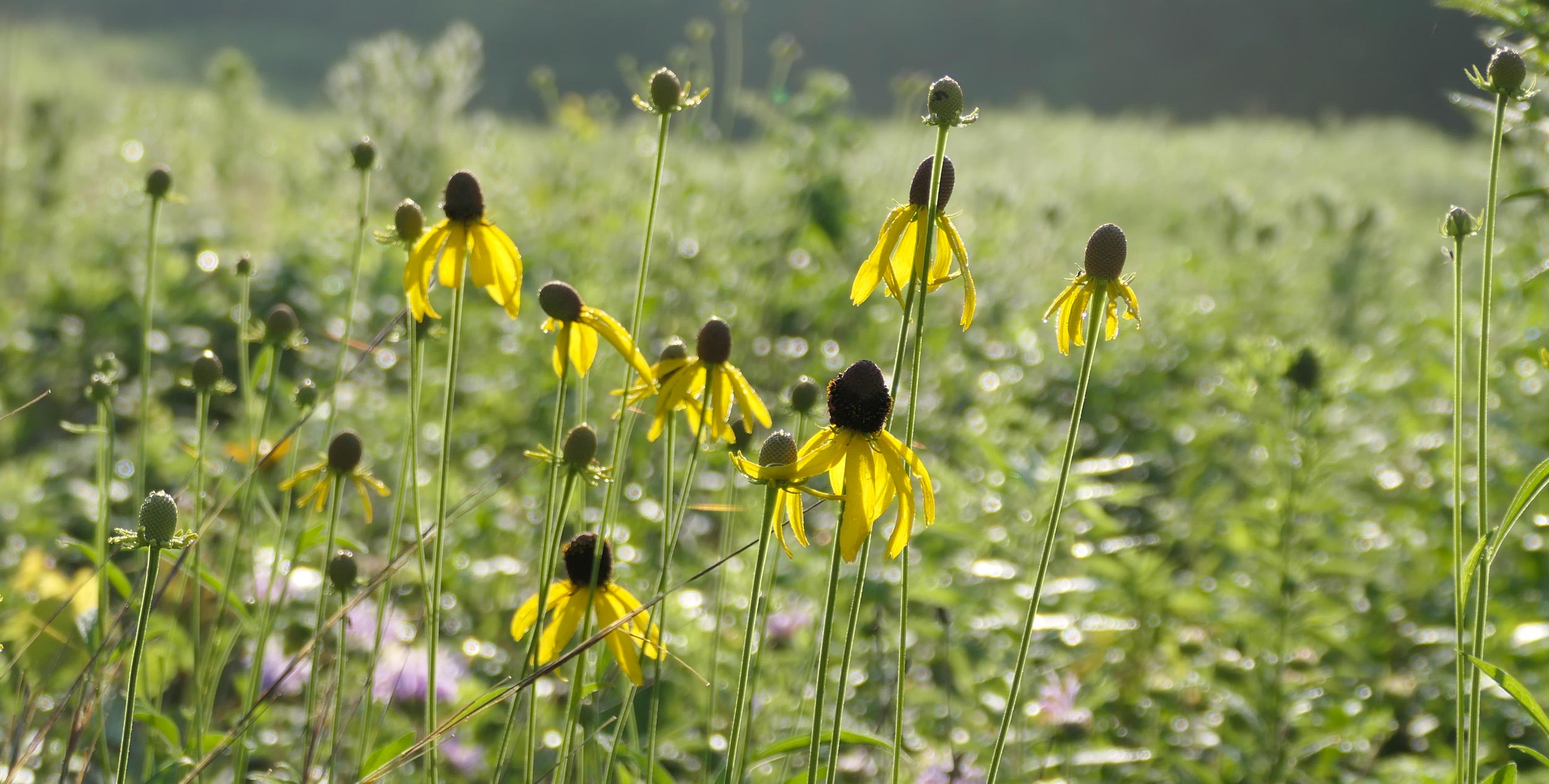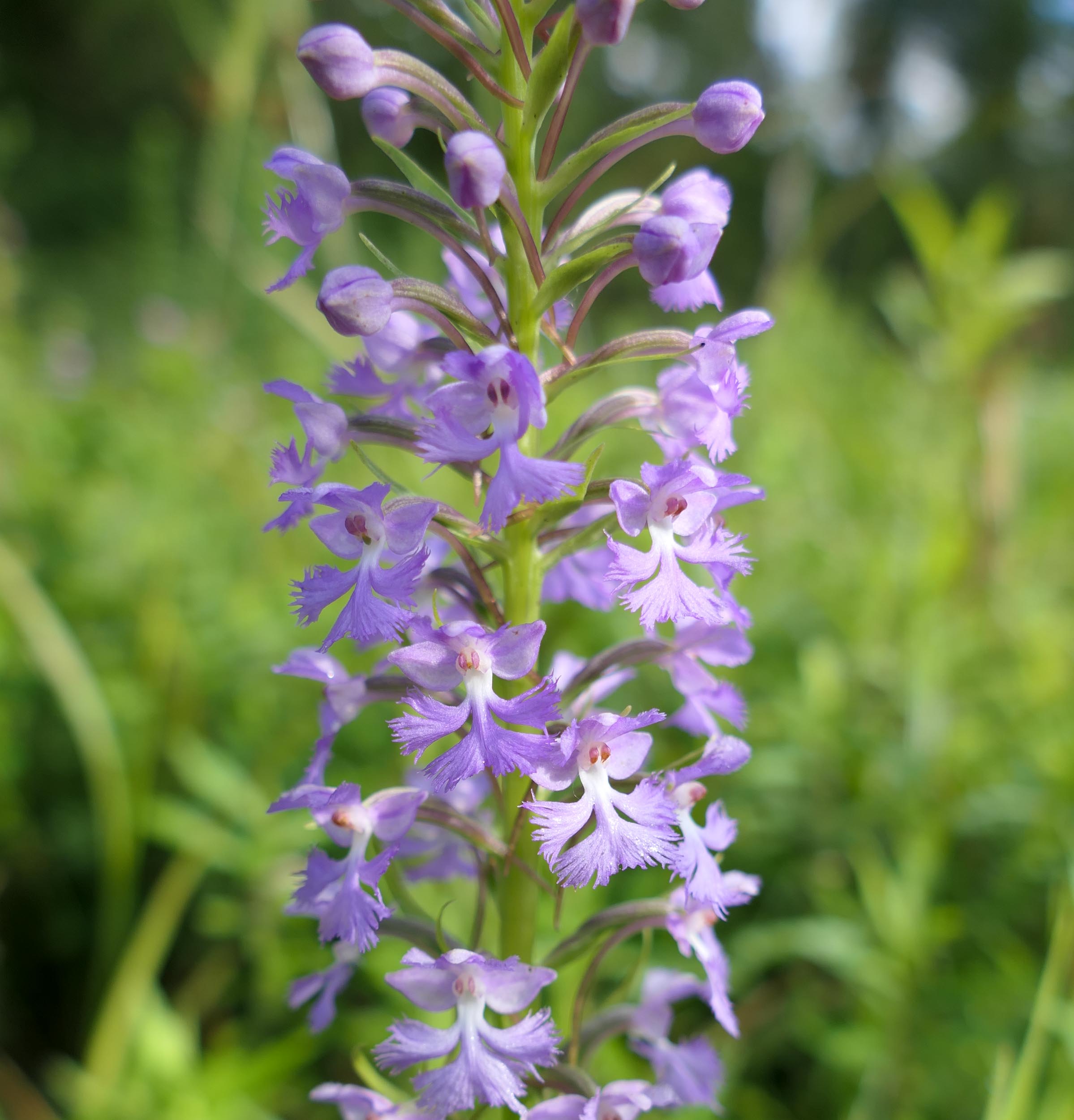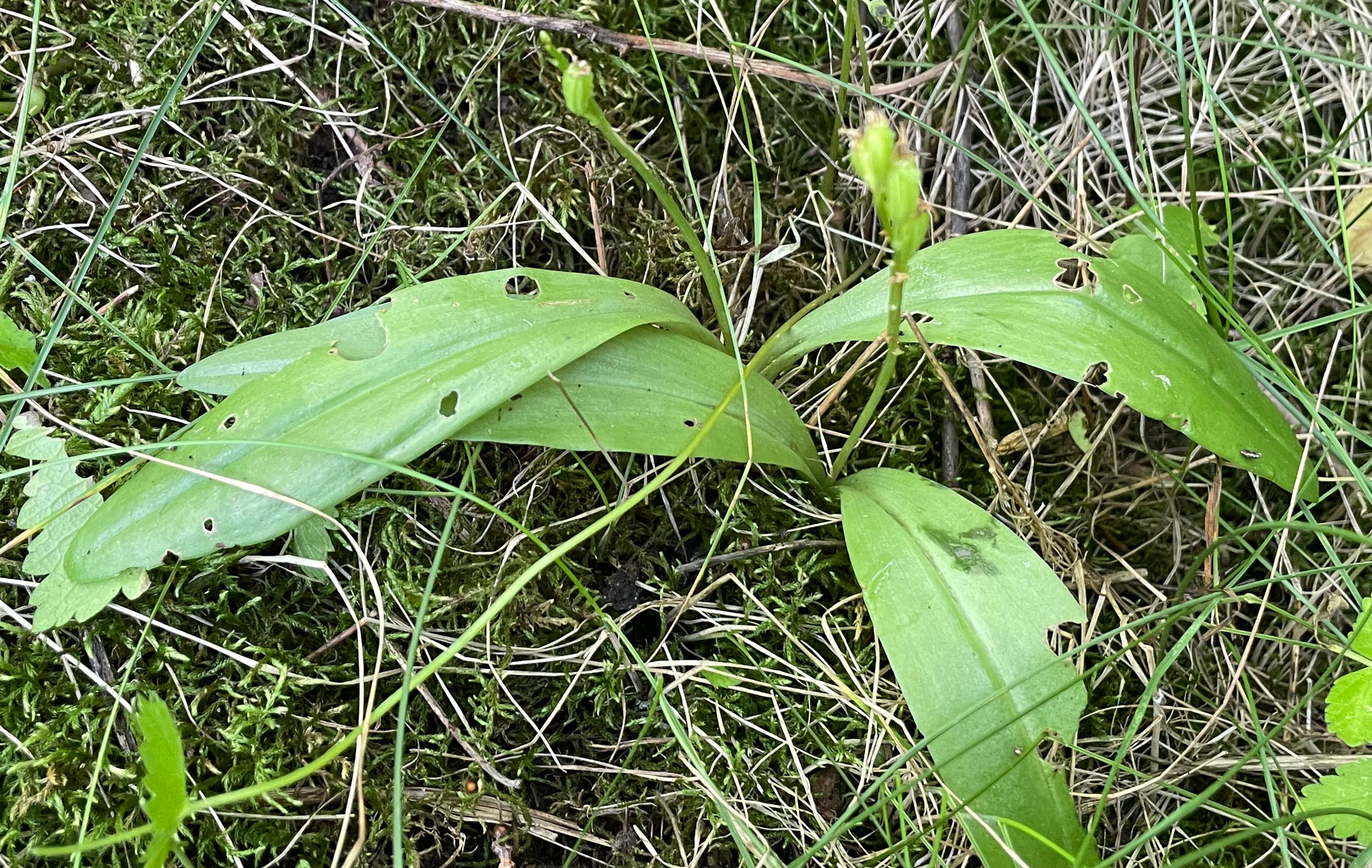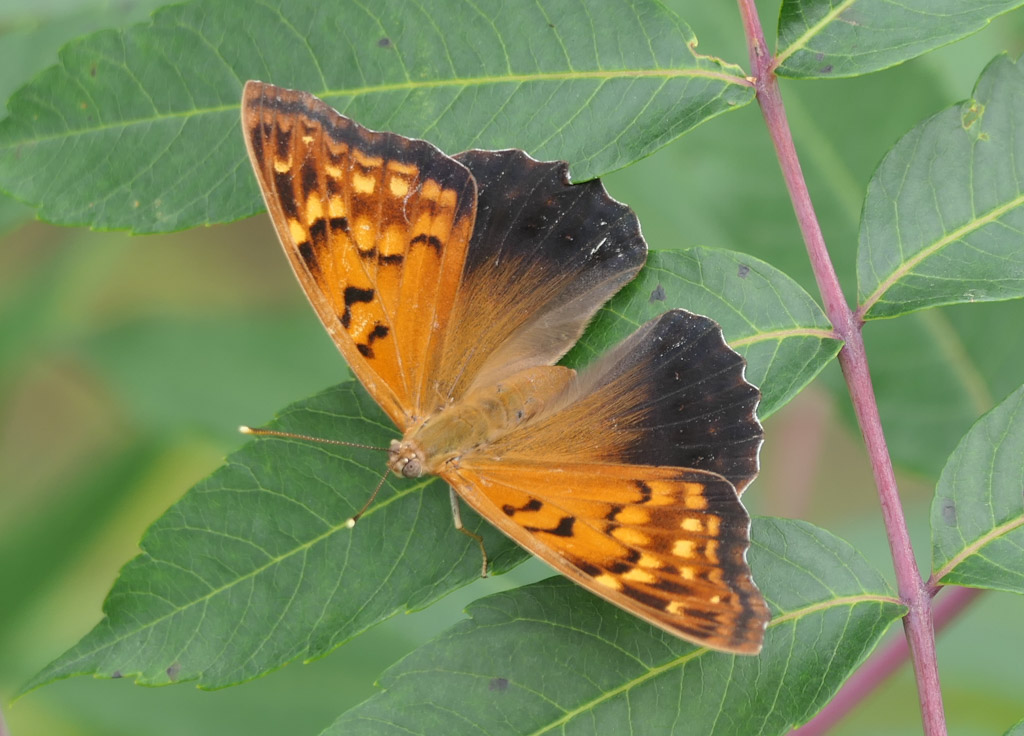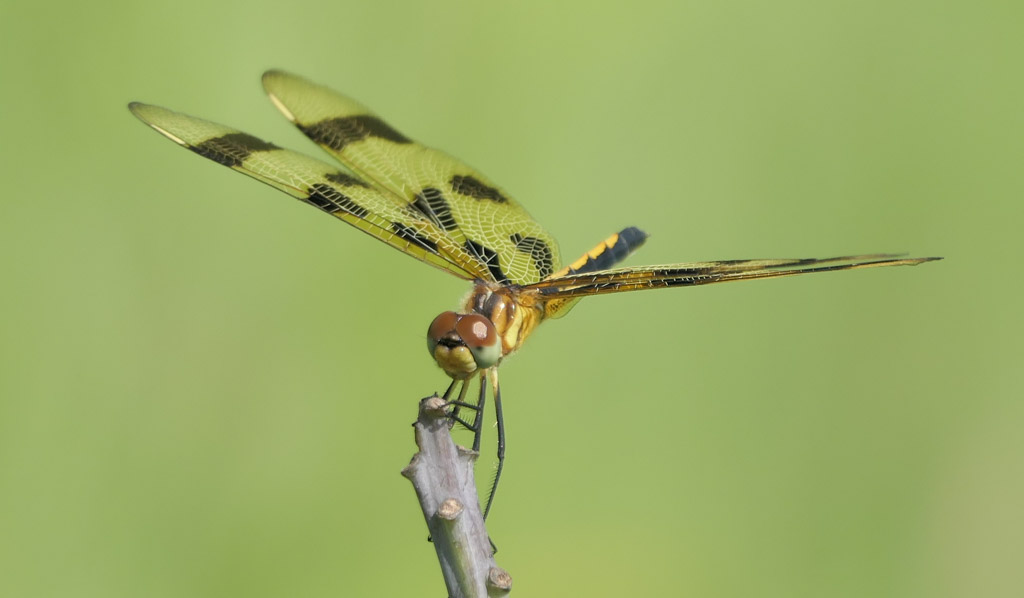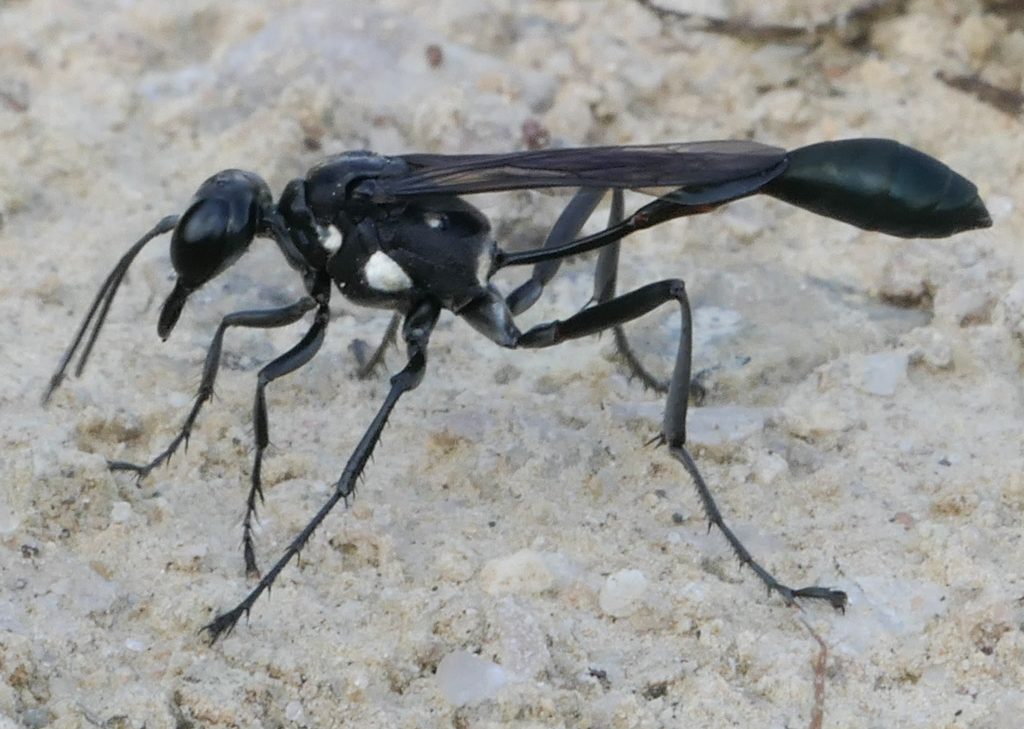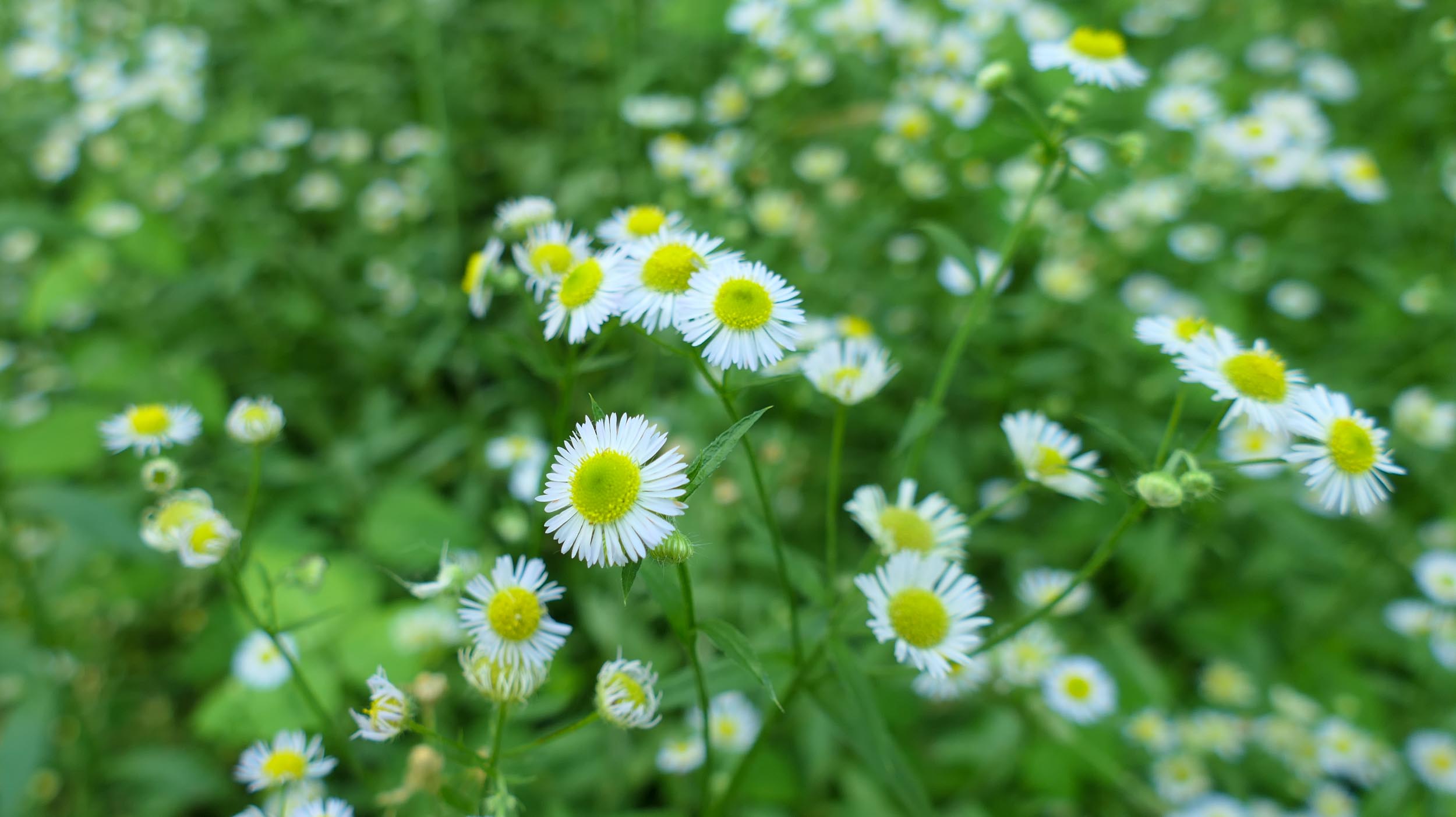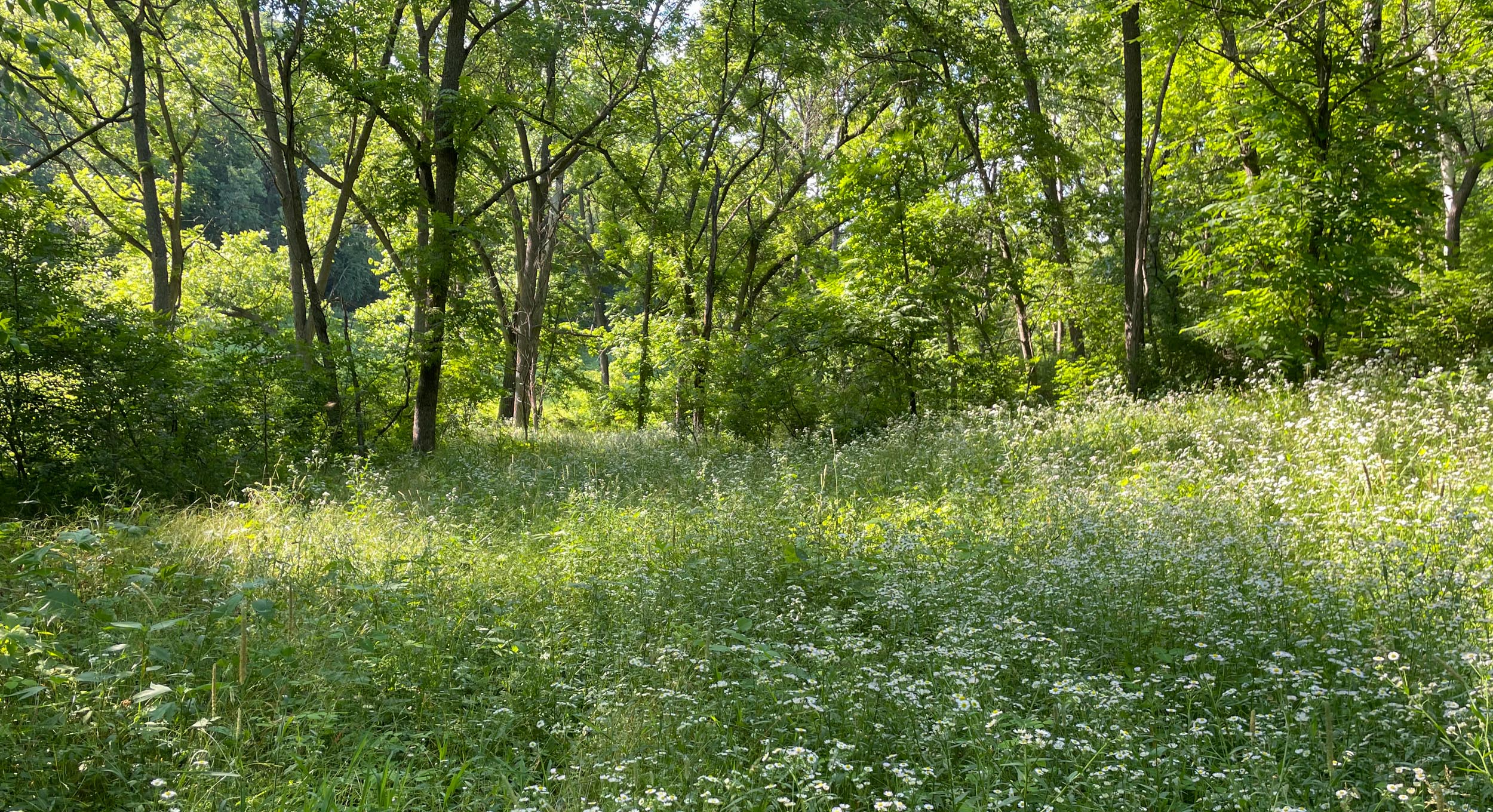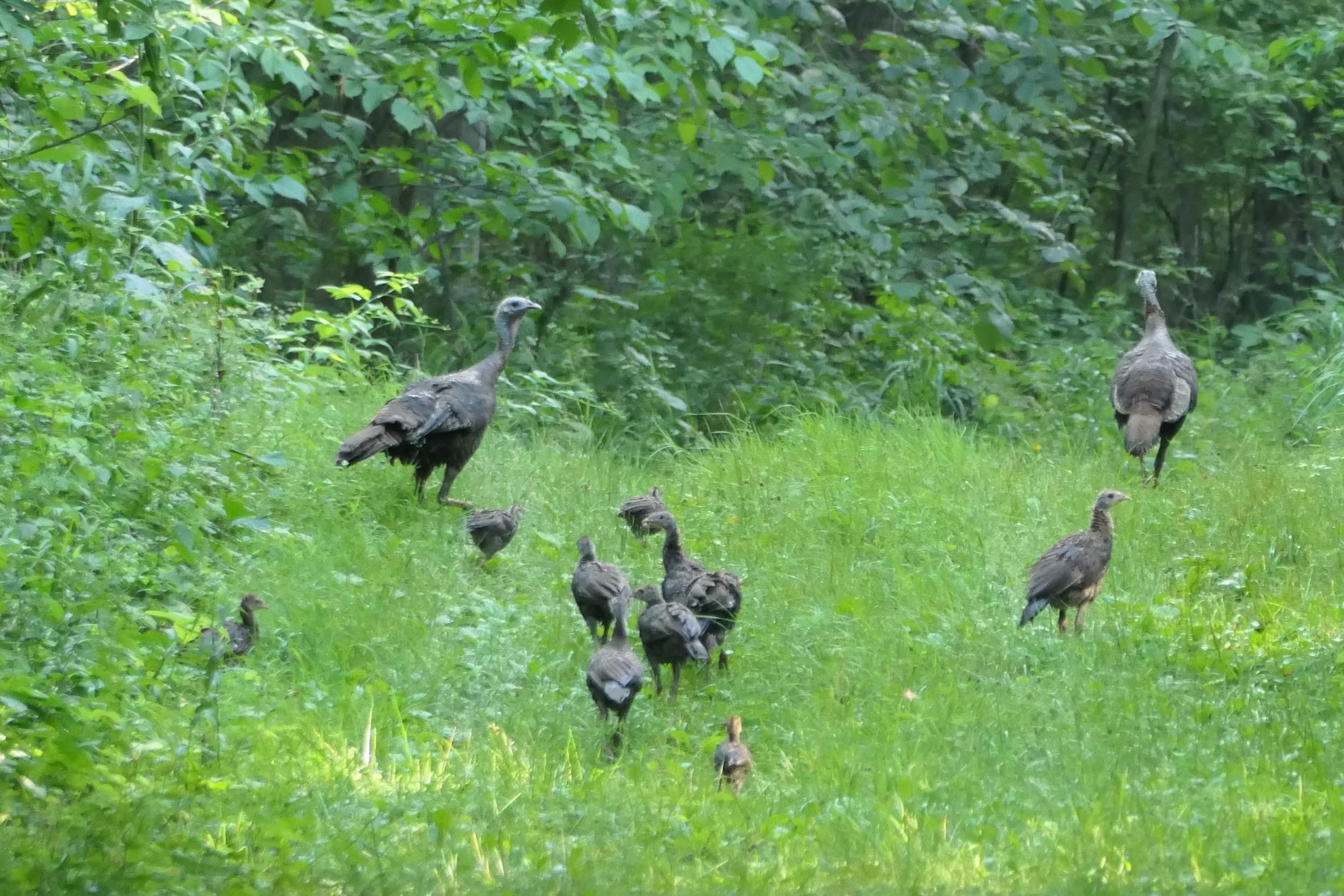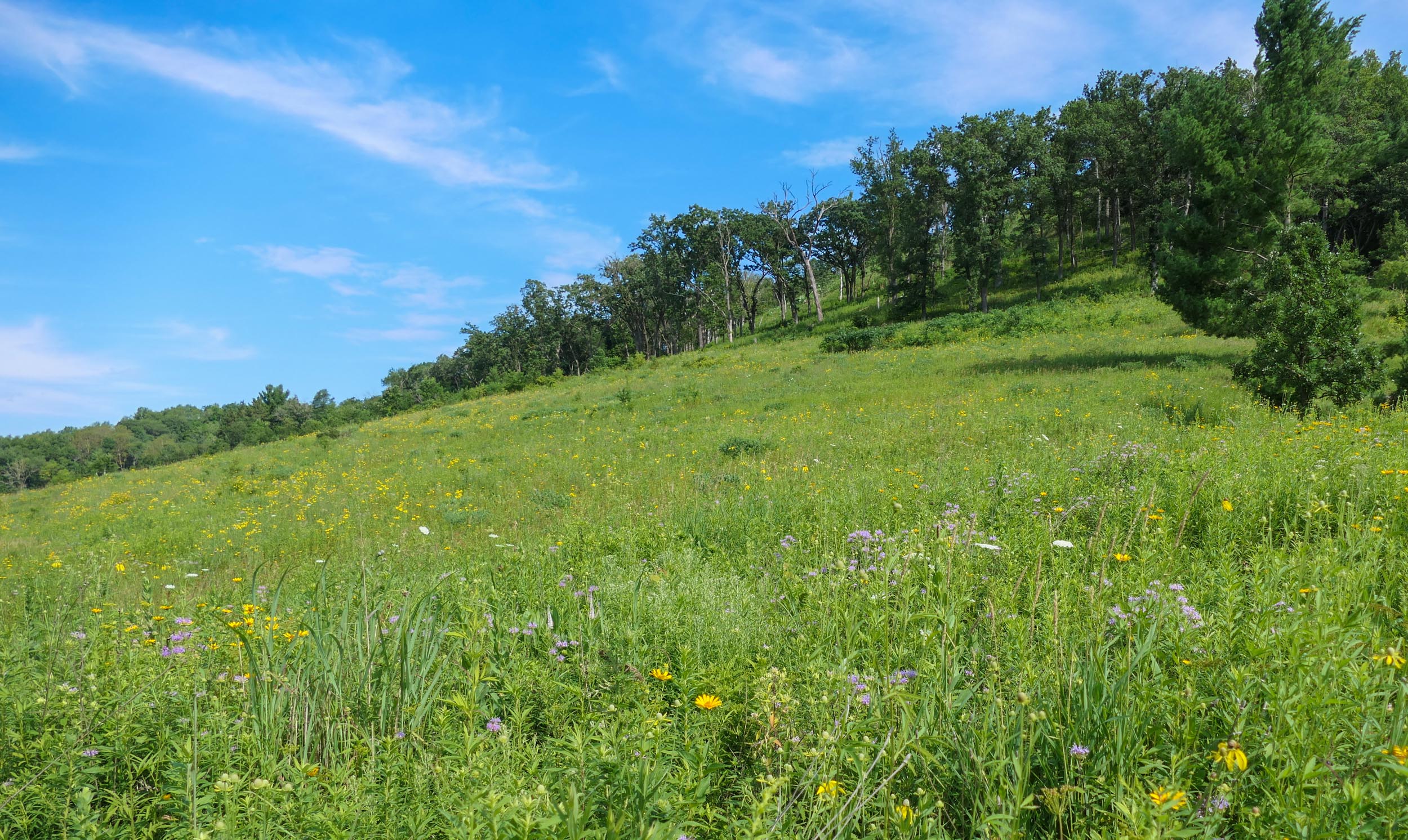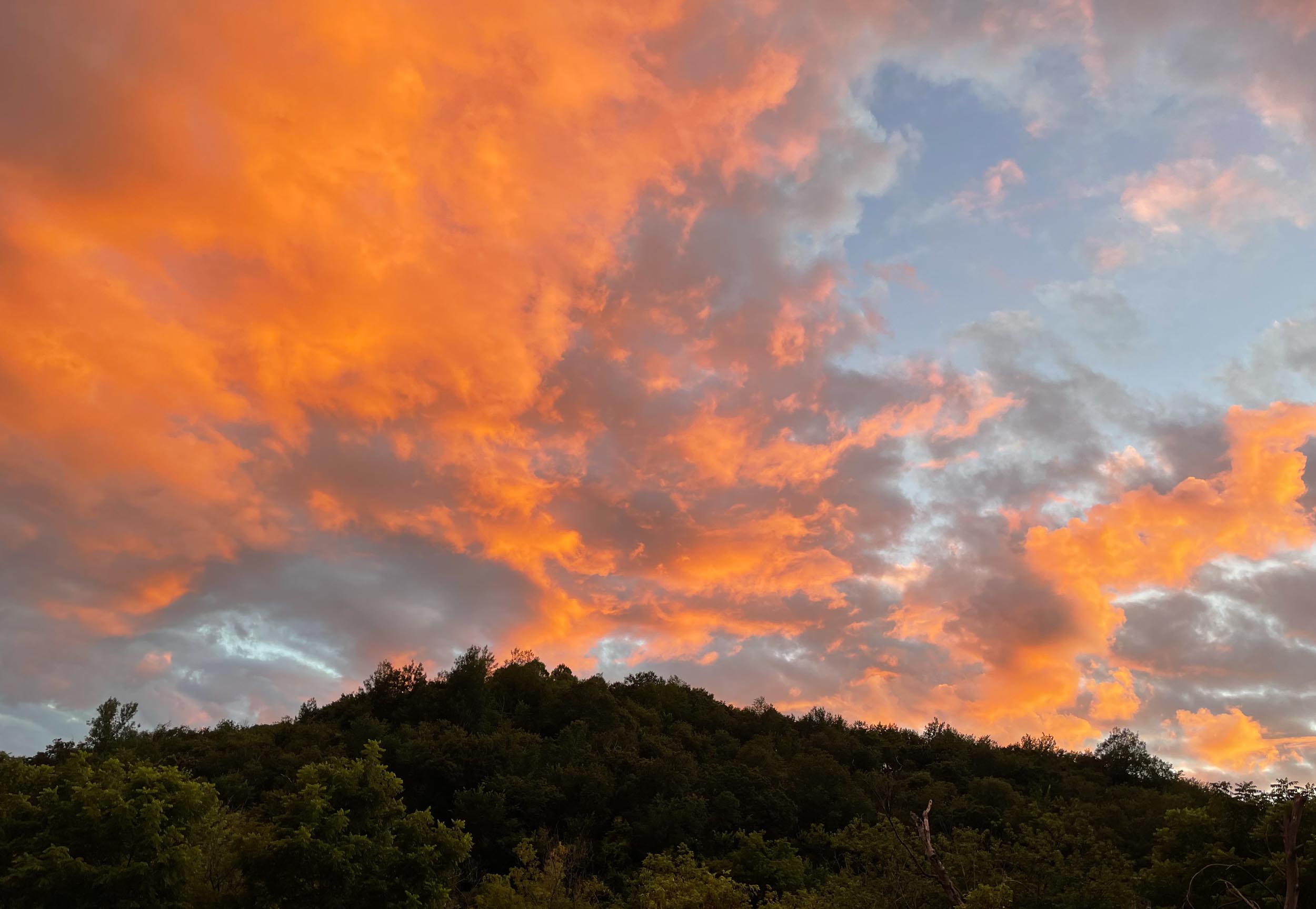July has been a busy month – lots of projects, lots of flowers, lots of interesting bugs.
Leadplant and Monarda on Hidden Oaks Point – one of our remnant prairie points
Yellow Coneflower in the Cat’s Paw Prairie – one of our early planted prairies – planted in the winter of 2002/2003.
Our biggest July project is always Wild Parsnip. Mike mows places that can be mowed and that don’t have as many ‘good plants’. I pull the rest. Our wetland is about 50 acres, and most of it has at least some parsnip, so it takes a while. And it means we spend a lot of time in the wetland.
Every year we find less parsnip, but there are still places that look like this.
This field has scattered spots with parsnip so Mike mows it like a maze – just cutting the places that need it. The mowed field on the slope above the maze is our newest planted prairie – planted last winter.
Wandering around searching for parsnip, I see parts of the creek that I hardly ever see. This is the pond behind one of the big beaver dams.
An inlet where the water from a spring flows out into the main creek
This is the creek next to our driveway. It used to have big rocks and rapids leading down to a pool around the bend. Recently the beavers have built a dam – just out of sight beyond the bend. Now it’s much quieter – no rapids, just calm water with fish and ducks and sometimes a beaver or a muskrat.
Snowy Campion is a Special Concern species in Wisconsin, but I find a lot of it in our wetland. It’s thin and delicate, and tends to grow mixed in with larger plants, so I wonder if it’s more common than people realize.
The flowers normally face down – this is the view when you look up at them.
We have two native orange lilies that grow here. This is Michigan Lily – in the wetland.
And Wood Lily – with an Edward’s Hairstreak butterfly – on a dry prairie remnant.
July is Milkweed blooming time. This huge clump of Butterflyweed is in one of our remnant prairies, and attracts dozens of butterflies. These are Fritillaries (mostly Great-spangled) and an Edward’s Hairstreak.
Edward’s Hairstreak
Monarch
A mated pair of Monarchs
Swamp Milkweed is also doing well this year – it seems to be spreading into new parts of the wetland. This plant attracted a Giant Swallowtail
and a Hummingbird Moth.
Whorled Milkweed is blooming on our dry prairie remnants.
Unexpected Cycnia moth caterpillar on Whorled Milkweed
Green Milkweed – also found on our dry prairie remnants.
Another dry prairie flower that’s doing well this year – Purple Prairie Clover
and for the first time I found Prairie Larkspur blooming in Hidden Oaks Prairie.
Yellow Coneflower
This is a Lesser Purple Fringed Orchid – a plant that I rescued from the edge of a friend’s cornfield a few years ago. Every year I cross my fingers that it will bloom – so far it has only missed one year.
And another odd little native orchid – Fen Orchid – with seed pods. It was growing inside the ruined foundations of the old stone barn.
Tawny Emperor butterfly
Halloween Pennant – one of my favorite dragonflies
Here’s an interesting bug that I found resting on the driveway: a Gold-marked Thread-waisted Wasp. Its larvae eat caterpillars, and the adults drink flower nectar.
Daisy Fleabane is a common native annual that’s often considered a weed. It tends to grow in disturbed places and often in gardens. Bees and other pollinators love it.
Here’s it’s growing in an area we mowed last year – under Black Walnut trees.
The New York Times has a recent article encouraging people to include native annuals like Fleabane in gardens. Much of the information in the article came from Alan Branhagen – of the Minnesota Landscape Arboretum.
A Wild Turkey family walking ahead of me up a trail.
Pine Point Prairie with our newest savanna above it on the hillside
Sunset

